Best Time to Visit South America
Best Time to Visit South America
South America is a great travel destination all year round. The best time to visit South America depends on the seasonal climate of the country you’re visiting, the activities you’re interested in, and the larger crowds and higher costs during peak tourist seasons.
In contrast to North America, the seasons of the southern hemisphere of South America (Argentina, Chile, Patagonia) are reversed with the summer months falling between November and February with winters between June and August. The northern hemisphere of South America (Ecuador, Northern Brazil, Colombia) follows seasonal changes more consistently with North America.
For example, the best time to visit Patagonia in the south is between November and February where harsh winters during June through September will close down most local operations. The best time to visit Peru is during the dry season between May and October with blue skies and warmer temperatures. Visitors will want to avoid the colder rainy season between January and March.
Clearly, South America weather plays an important role in planning a trip to South America. The type of activities and excursions you’re planning are also a primary factor in deciding when and where to visit. Check out our top 15 South America tours for custom vacation ideas from our travel experts. Each tour includes recommendations of the best activities and excursions with each destination.

My Recommendation
“In general, the best time to visit South America is in October and November as the springtime weather conditions make it comfortable in the cities, beaches, and mountains and nature’s beauty is on full display. Flowers are blooming, wildlife is much more active, and seasonal crowds and travel costs are fairly moderate.”
Rebecca Deering
South America Travel Expert
Best Places to Visit in South America – December, January, February
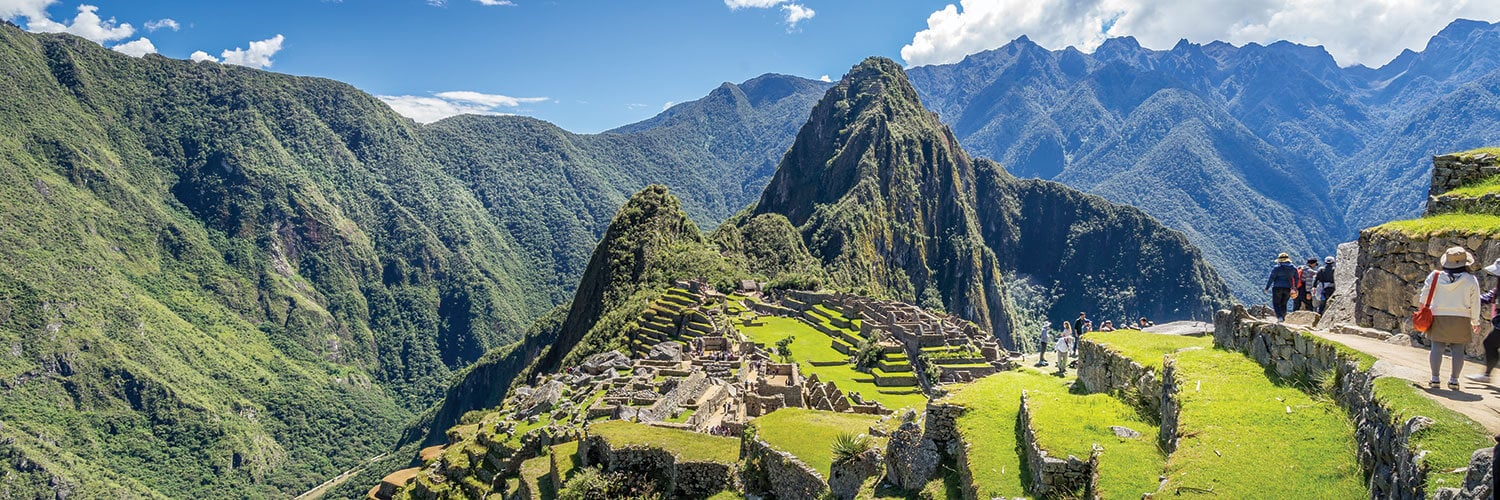
Summer in South America is from December to February. During this time, the continent enjoys warm temperatures, long days, and excellent conditions in the evenings for nighttime exploration.
In the summer season, travelers and locals alike enjoy the coastal towns for their fantastic beaches, ideal for lounging and sunbathing. Fernando de Noronha and Jericoacoara are two of our favorite northern beaches in Brazil.
In addition to the great weather, some of the world’s largest festivals take place in South America during the summer, such as Carnival in Brazil. In major metropolises, events from outdoor concerts, boutique markets, and even parades are a regular occurrence.
For the more adventurous and nature-oriented, the sunnier weather and longer days make destinations like Patagonia an ideal time to see some of the world’s most incredible natural wonders. However, in the Andean regions, like Bolivia, Peru, and Ecuador, summer is often rainy, ushering in their wet season.
Best Time to Visit Brazil
Brazil is largely tropical, leaving travelers sunkissed, relaxed, and refreshed. It is one of the best destinations in South America for nature. Even in its large bustling cities, like Rio de Janeiro, nature surrounds you. Butterflies inhabit the city streets and Tijuca Rainforest is scattered around the city. In northern Brazil, enjoy white-sand, secluded beaches, or embark deep into the dense Amazon Rainforest. With three rainforests and the Pantanal wetlands, Brazil is perfect for seeing South America’s rare and unique species of flora and fauna.
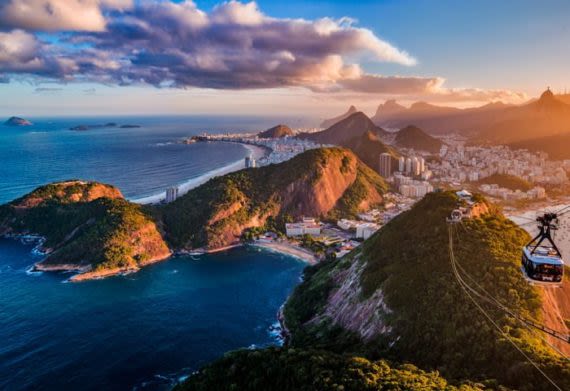
Best Time to Visit Ecuador
Ecuador has a variety of climates, regions, and landscapes, so it can be hard to determine when the best time to visit Ecuador is. Like most destinations, it depends on what you would like to do and the regions you would like to see and your preferences.
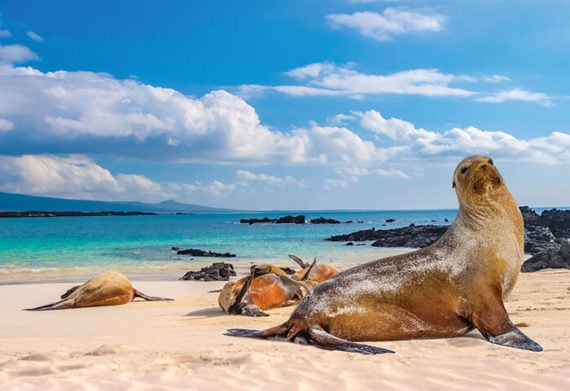
Best Time to Visit Antarctica
The Best time to visit Antarctica is the region’s summer period when the wildlife is the most active. This about November through March when the ice starts to break up enabling better access for ships. In November is when you may have a chance of seeing large icebergs which provide guests amazing photography opportunities. Travelers looking for the best deal might want to consider the beginning and the end of the season as the prices will be a little better. Antarctica is very popular and growing destination though, so let’s plan a trip to Antarctica before it gets too crowded!
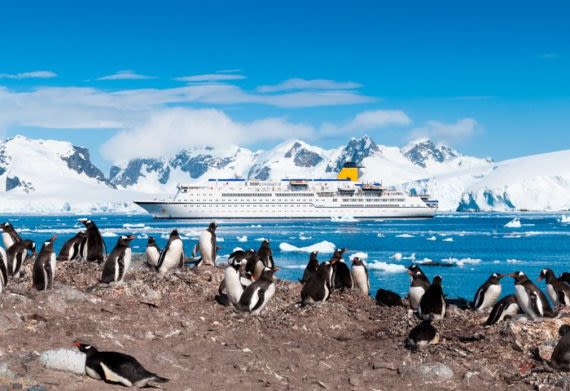
Best Places to Visit in South America – March, April, May
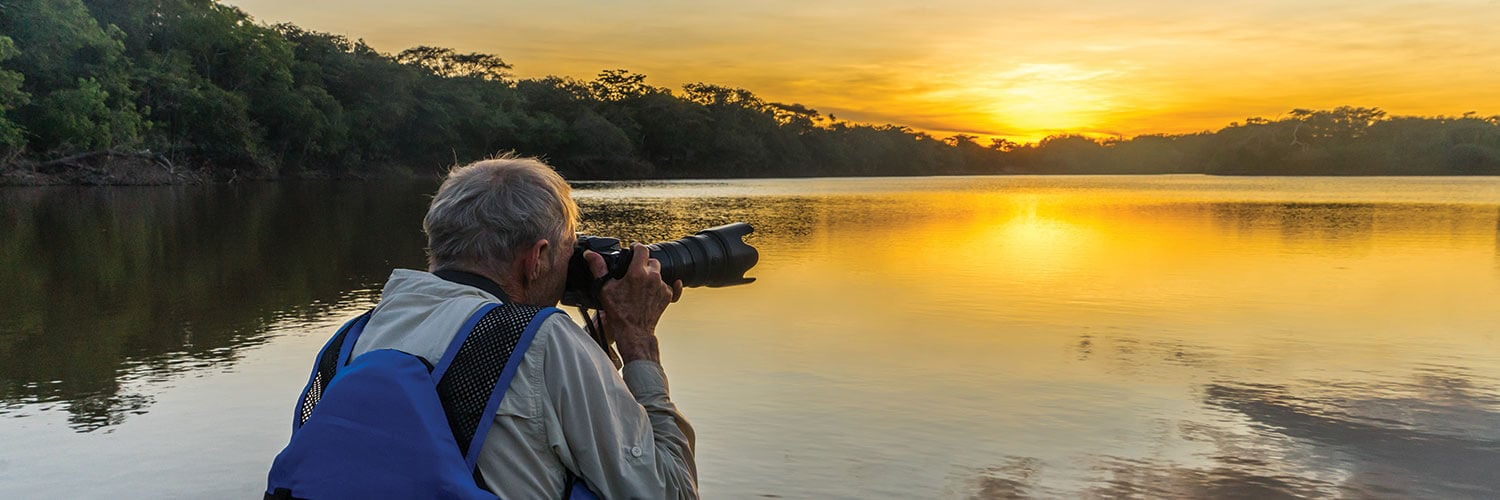
Fall in South America is from March to May. In general, this time of year results in fewer crowds and the price of transportation and hotels can drop throughout the continent as the busy summer season nears an end. Travelers will find great deals on hotels and tours at this time, while genuinely getting to experience the cities and cultures of the continent in relative peace compared to the busy summer.
In March, travelers can enjoy exploring the abundant marine life of the Peruvian Pacific, the volcanic islands in Brazil, the roaring waterfalls of Iguazu, and the incredible, untouched wildlife of the Galapagos.
Best Time to Visit the Amazon Rainforest
The Amazon Rainforest is an otherworldly experience. A place where rare wildlife can be just footsteps away from you. Spot the famous Jaguar, lurking caiman, colorful toucans, and more nestled in the lush rainforest. The best time to visit the Amazon Rainforest depends on the focus of your adventure.
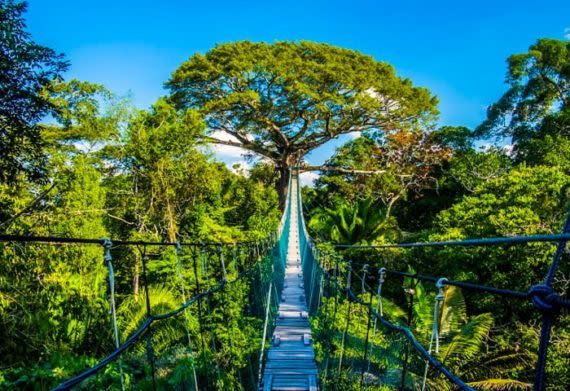
Best Time to Visit Machu Picchu
We consider Mid-April to June and from September to October to be the best time to visit Machu Picchu. This time of year coincides with dry and clear weather in the Andes Mountains. Travelers may reach Machu Picchu by train or trekking the Inca Trail.
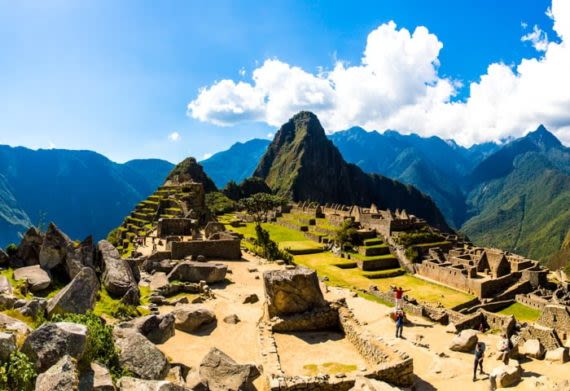
Best Time to Visit the Galapagos Islands
The Galapagos Islands are approximately on the equatorial line so the Galapagos enjoy year-round sunshine and warm weather. So really, anytime is the best time to visit the Galapagos; however, if you are interested in seeing specific types of wildlife, then you will want to explore our . We also have compiled some average temperatures in the chart below.
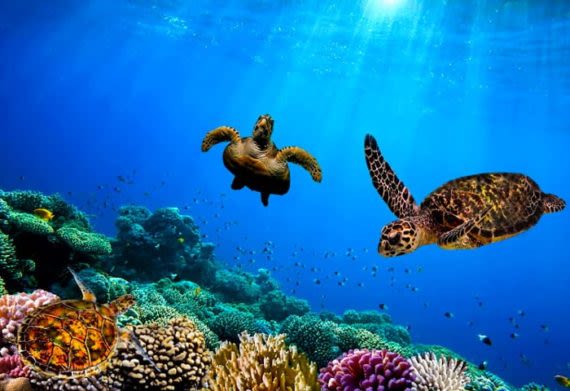
Best Time to Visit Venezuela
The dry season, from November to April, is usually the best time to visit Venezuela. This is the time of year that there is the least amount of rainfall and better warm sunny weather. The humidity is also lower making it a great time to explore the nature and landscape of Venezuela.
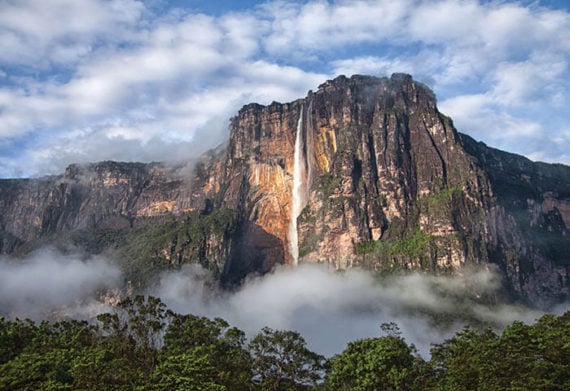
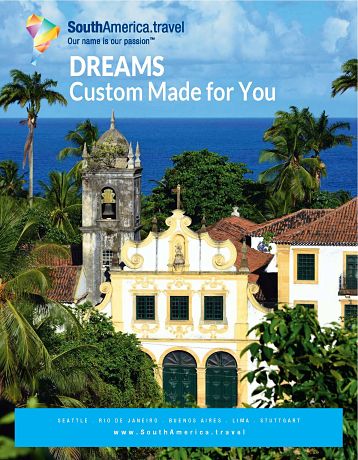
Download Your Free
South America Travel Guide
Download our FREE South America Travel Guide and get inspired to explore to South America. Browse through 26 pages of travel planning tips and ideas – a great resource for planning your dream vacation.
- Colorful maps and images
- Unique hotels within South America
- Inspiration for cruises, remote lodges and trains
- Wine, golf and adventure ideas
- 24 top tours of South America
Best Places to Visit in South America – June, July, August
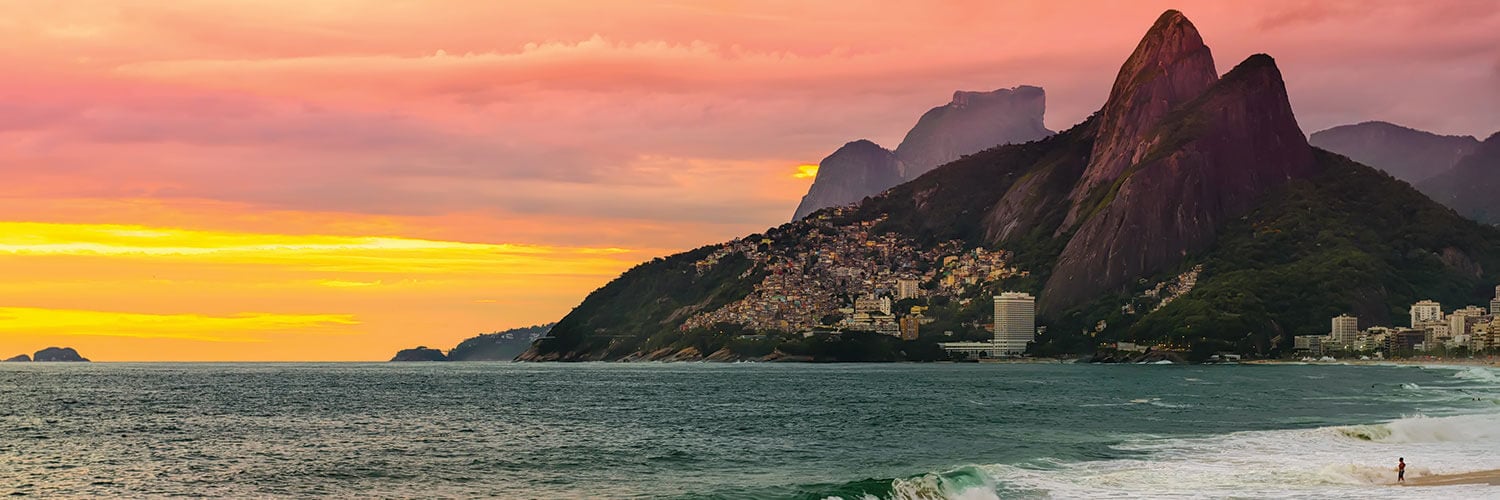
Unlike other continents, winter is an exciting season in South America, as it offers pleasant weather to every traveler. For visitors craving warm weather, Brazil, Ecuador, and Colombia are ideal. All three countries have a consistent, more temperate climate year-round.
For visitors who want to see Machu Picchu or the Andean regions of Ecuador, Bolivia, and Peru, these months perfectly align with their dry season. During this time, trails will reopen, and temperatures lower to a comfortable hiking level.
Winter sports enthusiasts will find no shortage of adventure during South America’s summer season. In Argentina and Chile, ski resorts and snow-covered mountains offer some fantastic skiing, snowboarding or cross country experiences throughout the winter.
Best Time to Visit Peru
Peru is one of the most popular destinations in South America – Machu Picchu being the huge draw. However, Peru boasts so many more beautiful sites and landscapes besides Machu Picchu which are perfect for families as well as solo and group travelers. Enjoy ancient ruins, colonial towns, and some of the world’s best cuisine.
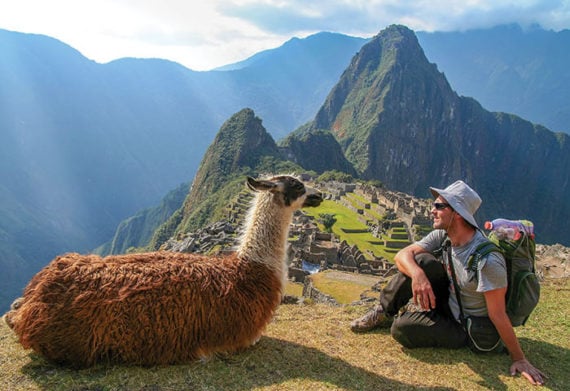
Best Time to Visit Colombia
The winter months of July and August are considered to be the best time to Visit Colombia. The summer months of July and August are also a great time to visit. These months have the lowest rainfall of the year and can also coincide with whale watching along the pacific coast.
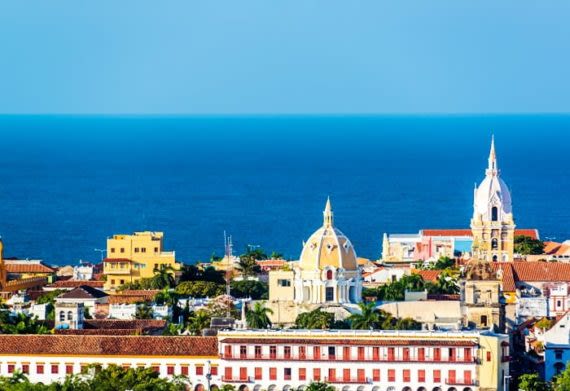
Best Time To Visit Bolivia
The Best Time To Visit Bolivia is the Dry Season, this is about from May To October. During this period, there are beautifully clear days with occasional rain showers. Although the days are considered shorter during this time, the sun still shines just as bright. The pleasant weather makes for worry-free road conditions and little barriers to transportation, meaning there’s nothing stopping you from exploring everything that Bolivia has to offer! If you enjoy hiking, trekking, bike riding, climbing or any other outdoor activities, the dry season is the best time to travel to Bolivia.
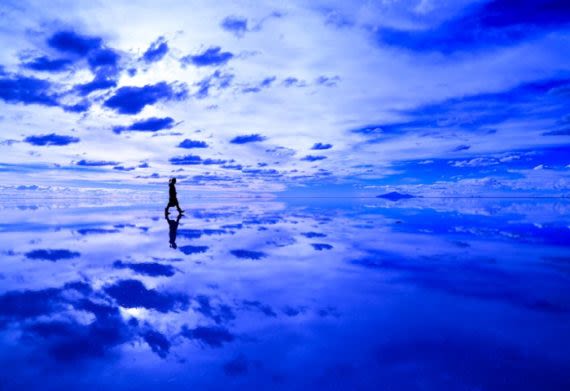
Best Places to Visit in South America – September, October, November
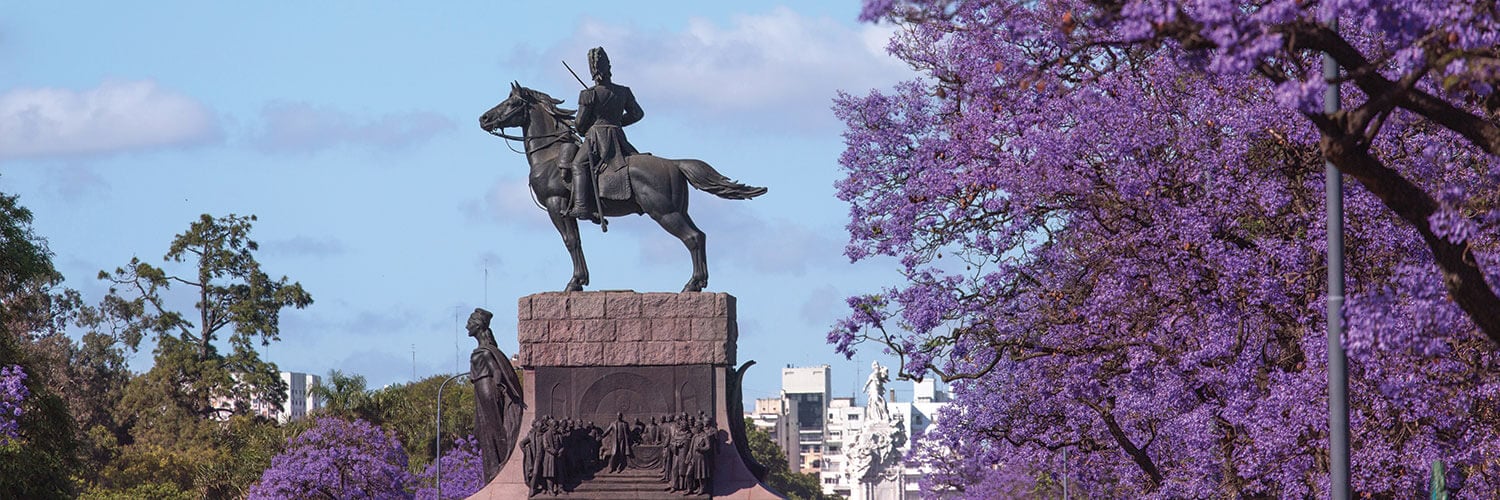
Spring is from September to November, and it is a fantastic time to visit South America. In general, spring marks the beginning of warmer weather throughout the continent. For example, in Buenos Aires, Argentina (the Paris of South America), travelers experience sunny, bright days and the beautiful bloom of Jacaranda trees that line its streets.
In tropical climates, like Colombia and the Amazon Rainforest, the seasons have little impact on weather changes, operating on their wet (approximately December – May) and dry seasons (June – December).
In addition to the warm and temperate weather conditions, travelers enjoy the added benefit of fewer crowds. It is during this time that European and North American families return to school and work after the northern hemisphere’s summer season, leaving South America even more enjoyable.
Best Time to Visit Argentina
Argentina is a popular destination for just about everything – its architecture, culture, wine, and natural landscapes keep travelers interested around the world. Taste the world renowned Malbec in Mendoza, dance the Tango in Buenos Aires, trek the glaciers of Argentine Patagonia, and explore its European inspired architecture.
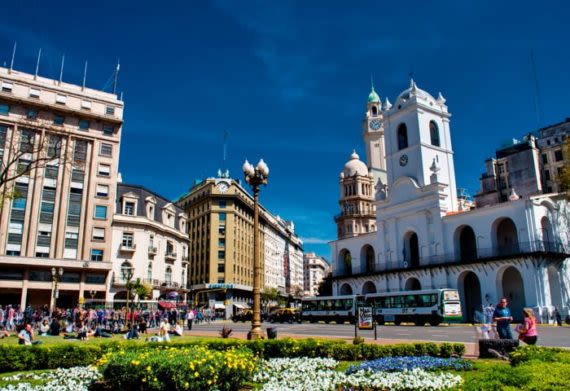
Best Time to Visit Chile
Chile is a great country to visit year round. Stretching over 4300 km long and almost halfway down the coast of South America, Chile offers a diverse range of climates. Depending on where you want to travel and what activities you would like to do, will determine the best time to visit Chile.
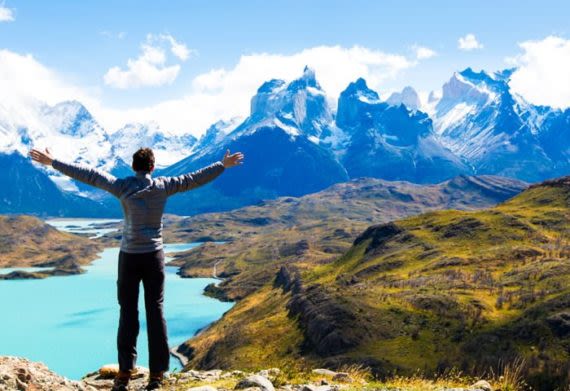
Best Time to Visit Patagonia
While Patagonia is arguably home to some of the most beautiful and breathtaking national parks in the Americas, it is also notorious for its unpredictable and ever-changing weather. We consider the shoulder seasons to be the best time to Visit Patagonia, but It’s tricky to give a blanket statement on when because it depends on what you are looking to do and see. Some venture to Patagonia for hiking, while others go for photography, relaxation, and adventure.
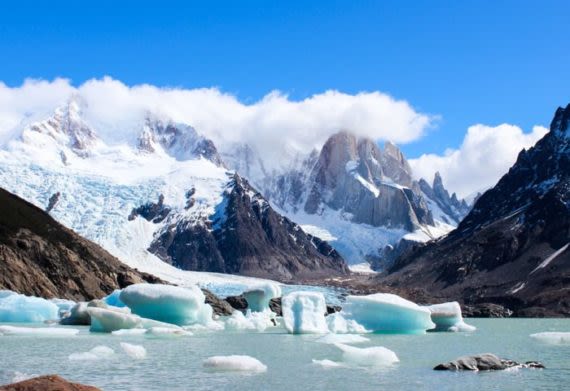
Best Time to Visit Paraguay
Travel to Paraguay is possible year round, but there are only two main seasons: hot, and extremely hot. The months of December through February are the peak hot months. Paraguay does not experience much rainfall, apart from the occasional cooling showers between March and November. We think travel to Paraguay is best any time of year, depending on your interest.
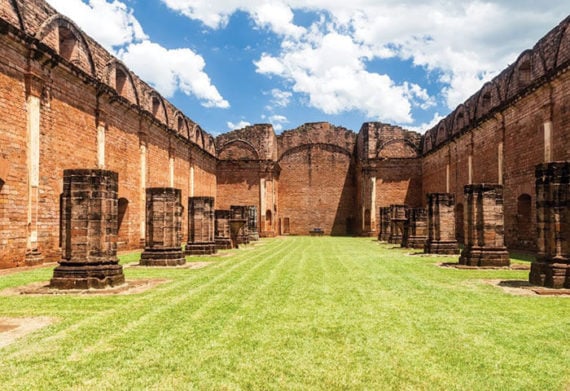
Best Time to Visit Guyana, French Guiana, and Suriname
We consider that from late August to September or February to March to be the best time to visit Guyana and its neighbors. The rainy period is over by then and everything is green and beautiful, Kaieteur Falls are running strong, and rainfall is not too much.
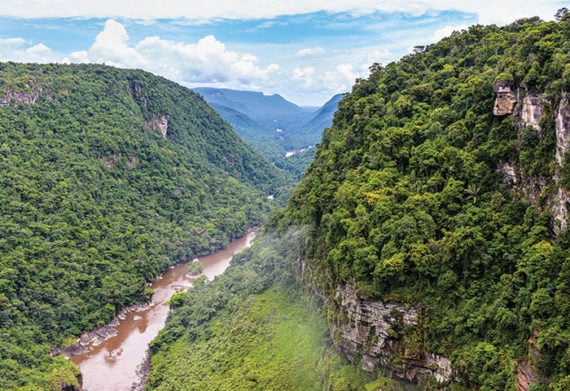
Best Time to Visit Uruguay
We consider October to March to be the best time to visit Uruguay, especially if you’d like to enjoy ocean breezes and beautiful blue skies. The wind coming off the ocean will keep you cool and you might even get a great suntan. While every season in Uruguay offers visitors ideal weather for many activities, the counties Autumn months also provide a great experience.
South America Travel: 1 Month Itinerary
South America is a mecca for travelers looking to experience different cultures, landscapes, outdoor adventures, and of course a variety of different cuisine. For my friend, Rachel, and I it had long been a dream to explore this land of contrast between ancient pre-Incan civilizations, Incan ruins, and Spanish colonization. We planned to travel together for three months and experience as much as time and more importantly, our budget, would allow.
We didn’t have a direct route planned, but here is how we spent our first month in South America.
1 Month Itinerary (Brazil, Argentina and Chile)
Day 1-4: Rio de Janeiro, Brazil

We decided to fly into Rio de Janeiro primarily as it was the cheapest flight we could find. Our first couple of days in Rio consisted of acclimatizing to a new city and getting over slight jetlag. We treated ourselves to nice accommodation and stayed in Copacabana, a couple of blocks from the beach so we could have some beach time before we travelled south where it was going to be colder. We arrived at the beginning of July, which is winter in this part of the world. It’s a nice time to visit if you don’t mind a slightly cooler climate (it was rarely below 50 F) and a bit of rain.
In Rio we were first introduced to what would become a staple diet for us on our trip, consisting of rice, beans, and meat for dinner and sweet cakes, and scrambled eggs for breakfast. We also tried a typical rodízio steakhouse restaurant where you pay a set price and the waiters will bring around different plates of meat for you to choose whatever you like. In Copacabana we also went to a Pizza version of this and paid about $11 each for a full meal and a couple of drinks.
We were also keen to see the main sites of the city. We found the best way to do this in the short time we had was to do a day tour, which cost about $55 each. The tour includes a visit to the Lapa steps, the life’s work of Chilean artist Jorge Selaron, a visit to the most famous landmark in Rio, the Christ the Redeemer Statue, and finally a cable car ride up the Sugarloaf Mountain at sunset. It was definitely worth the price, although if you’re feeling slightly more adventurous, not so flush with money, and have a bit more time you could equally get public transport or even taxis to each site.
We debated traveling to Iguazu Falls via Paraty as we had heard that it is beautiful but we decided financially and time wise we were better off heading straight to Foz do Iguacu on an overnight bus. If you have the time, I would definitely recommend including a day or two in Paraty before going on to Foz do Iguacu. Instead, we got a bus from Rio de Janeiro to Foz de Iguazu, which cost roughly $65 and was advertised as being 24 hours. However, we were soon to learn the realities of travelling by bus in South America.
Day 5-8: Foz do Iguacu, Brazil & Puerto de Iguacu, Argentina

The 24-hour bus turned out to be closer to 28 hours so instead of arriving relatively early in the day we arrived in Foz do Iguacu as nightfall was approaching. We had toyed with the idea of staying in the town itself when booking our accommodation but instead chose to stay in an Eco lodge right next to the entrance of the national park. This turned out to be a wise decision. We got a taxi from the bus station to the lodge where we used our padlocks for the first time… on the window in our room, which didn’t stay closed otherwise. There wasn’t much around the area as the entrance to the park is a good 15 to 20 minute drive from the town. However, our lodge did a nice dinner of beans and rice for $6 per person.
On our first morning, we walked down the driveway of our lodge, about 100 meters to the left and we were at the entrance to the park. Included in the entrance fee is the bus, which runs from the entrance to the trails from which the spectacular falls can be viewed. Like most of the big attractions we visited on our trip, it was very crowded, however that didn’t take away from the stunning natural beauty of the falls. In our time in Iguacu, we also visited the Parque des Aves. This family founded and run Bird Park is a must for anyone, not just bird lovers. We also took a day trip (via taxi, organized by our accommodation) to the Argentinian side of the falls. The trails on the Argentinian side were longer and more clearly sign posted and great to get some exercise, although still very crowded. If you have the time, it’s definitely worth visiting. Whether the falls are better on the Brazilian or Argentinian side…the debate rages on.
Day 9-12: Corrientes, Argentina

To get to Corrientes we took a public bus from outside our accommodation in Foz do Iguacu to the Argentinian town of Puerto de Iguacu. We spent the day there and took an overnight eight-hour bus to Corrientes, arriving early in the morning.
Corrientes has a beach on a river and is a quiet yet vibrant large town. It did not disappoint, and gave us a real feel for Argentinian life. We spent a couple of days on the beach, although we didn’t brave swimming in the river. We also explored the city including the street art and the book fair, which was on at the time we were there.
We quickly learned that the priorities to look for in a dorm room are:
- Easily accessible plug sockets, preferably in each bunk.
- Individual lights.
- Spacious rooms.
- Upper bunks easily accessible and not too high. Personally, I preferred staying in mixed rooms but there are usually female and male dorms available too.
Day 13: Salta, Argentina

Our next stop was Salta. We stayed for one night as it was really just a brief stop for us on the way to the northern desert area of Argentina. We found it to be very lively, particularly at night. There were lots of restaurants, bars, and clubs to choose from, many of which featured peña bands and dancers, which are traditional and very popular in this area. The next day we got the bus from Salta to Juyjuy, the gateway city to the more northern areas, and then from Juyjuy to Maimara. The journey took only about five hours.
Day 14-17: Maimara & Tilcara, Argentina

We had decided to stay in Maimara, which is less than four miles outside of Tilcara, the main town in the area to stay in. We had met a fellow traveler in Corrientes who had recommended Maimara and in particular a homestay she had stayed in there. This was really our first experience of being in more remote regions and we loved it… for a certain amount of time. Maimara is very small but there is lots going on. The first evening we arrived, there was a local festival on with food, dancing, and local handmade crafts for sale.
On our first full day we took a local taxi into Tilcara, visited Pucara de Tilcara, a pre-Hispanic archaeological site, and trekked to El Garganta del Diablo (the Devil’s throat) which took about two hours and is definitely worth walking rather than getting a taxi, if you can. Tilcara, although quite touristy, is a strikingly picturesque town and full of life.
The next day we took a local bus to Pumamarca and from there took a tour to Salinas Grandes. The drive alone is breath taking and reaches an altitude of 4,000 meters. The salt flats themselves were like nothing we’d ever seen before and the views, as well as the wind, blew us away.
Day 18-21: Cordoba, Argentina

From Maimara we took the bus back to Juyjuy and then another bus from Juyjuy to Cordoba. It felt very strange being back in a city after what felt like a long time in the remote northern regions. Cordoba is a city for everyone. It is full of history and culture, and has some modern areas as well as lots of cute little streets, cafes, and shops. It’s also where we did our first of many “free” walking tours. These tours are usually tip based and some will suggest a tip amount whereas others will leave it completely up to you.
Day 22-25: Mendoza, Argentina

We took a 12-hour bus journey from Cordoba to Mendoza, which was to be our last stop in Argentina and our personal favorite. Throughout most of our South American trip we were able to use the website www.busbud.com which gives accurate (the majority of the time) information about bus journeys. We would use this site to get information on times, bus companies, prices, and likely journey times and then compare against this when we went to the bus stations to buy our tickets.
Although much smaller than Cordoba, there is no shortage of activities to do in Mendoza. We did a sunset horse trek on our first afternoon there, which included a barbeque of some of the best food we had thus far on our travels. We also did a bike tour of some local wineries. We also visited the Cacheuta Thermal Springs, where we splashed out and went to the hotel thermal springs for a full afternoon and enjoyed the sauna and a mud bath, this costs us around $15 each.
Mendoza is a city with an interesting history (worth doing the free walking tour to hear more about this) and feels like a small town disguised as a city. When the Spaniards arrived here the landscape was occupied by the Huarpe Indians, who had created a dam system to enable them to grow different crops. Remnants of this dam system remain today as the modern city has a dam system to irrigate the thousands of trees planted throughout the city. It’s definitely a place I would like to return to.
Day 26-30: Santiago, Valparaiso, and San Pedro de Atacama, Chile

One of our shortest bus journeys was our eight-hour journey from Mendoza across the Andes into Santiago. This includes the couple of hours it took to get through the border crossing between Argentina and Chile, which, although long, was quite straightforward. As were all of our other border crossings. I would definitely recommend checking the visa requirements in advance for each country you intend to visit as they do differ depending on your nationality. For example, in Bolivia there is a requirement for U.S. citizens to get a visa to enter the country and this costs around $160.
The bus journey was stunning. From the start to the end you have fantastic views of the Andes and although hair raising at times driving along narrow, winding roads, it is definitely worth the extra heart palpitations. A possible end to your month of traveling would be to spend a couple of days in Santiago including a day trip to Valparaiso, which is only a couple of hours from Santiago, then back to Santiago to fly home. Alternatively, you could spend some more time in Brazil at the beginning of your trip or cross into Paraguay for a couple of days from Foz do Iguacu and then travel into Argentina through Paraguay. For our trip which was to continue on for a couple of months we spent a couple of days in Santiago then Valparaiso and traveled north through La Serena to San Pedro de Atacama which was a huge highlight for both of us. From there we travelled to Bolivia, then along Lake Titicaca into Peru and up through Peru into Ecuador.
Daily Budget/Budget Breakdown for the Traveling

Our budget was roughly $1,600 per month including $11 to $16 per night on accommodation. This meant our daily budget was roughly $55 per day. We had originally hoped to travel on an even stricter budget and this is definitely possible if you don’t do as many activities and tours as we did, don’t move around as often, stay in the cheapest accommodation possible, and cook the majority of your meals in hostels.
While we had a cheap accommodation budget and spent the majority of our nights in dorm rooms, we didn’t stay in the cheapest hostels as luckily we could stretch our budget a bit to ensure we were comfortable. We did also stay in a lot of double or twin rooms when they were within our budget. We rarely spent over $11 per night on accommodation and in fact often spent below that.
We were keen to try local cuisine in each area we traveled to but this also meant eating out a lot. To compensate for this we would book accommodation that included breakfast, fill up on breakfast, and typically only eat out one meal a day. Filling up on snacks or breakfast leftovers during the day. We would normally be able to get a full meal plus a beer for about $11 each. However, there were some locations (such as Santiago and Chile in general) where we often spent more than that. There were also times we spent a total of $11 for two meals and drinks in places like Bolivia.
What to pack?

It was difficult deciding to pack, as we knew we would experience different types of weather on our trip. I packed some warm and cool clothes, trek towel, hiking boots, comfortable walking shoes, flip-flops, and sandals. I also packed a first aid kit which I would definitely recommend (add extra plasters) and a sleeping bag which you will definitely need if you plan on trekking. Some of the simpler things like a laundry bag and a padlock as well as a head torch turned out to be the handiest. And of course a swimsuit if you plan on doing any sunbathing.
Is South America Safe to Travel?

We felt safe in all of the countries we visited and didn’t experience any problems. We’ve both traveled a good bit and are very conscious of taking precautions. We were mindful not to carry too much cash, or our passports around with us—unless traveling between places—and we kept these locked in lockers in the hostel. If we had to carry them we kept them on our person in fanny packs at all times and made sure that the fastener of our fanny pack was not easy to open or access. We did hear a couple of stories of phones etc. being stolen but if you keep your wits about you at all times, you do minimize the risk of that happening. As two women traveling, we did receive some attention but if you’ve traveled before this is probably something you are used to.
Overall, I was surprised at how easy it was to get around. In every town we visited no matter how big or small there were always multiple bus companies operating and it was easy to get buses to where we were going. It was definitely a huge advantage that my friend speaks quite good Spanish, although I did pick up the basics. If you can, I would recommend doing a short course before arriving as most people will not speak English. For the most part the people in each country we visited were very friendly and keen to communicate with us. The people as well as the incredibly diverse landscape and vast array of things to see and do all made our trip an incredibly memorable experience.

Get Your Free Report on the World’s Best Places to Retire:
Learn more about the best places in the world to retire in our daily postcard e-letter.
Simply enter your email address below to sign up for our free daily postcards and we’ll also send you a FREE report on The World’s Top 10 Retirement Havens, plus access to over 10 more free reports. Our gift to you, on our favorite destinations.
When Is The Best Time To Visit South America?
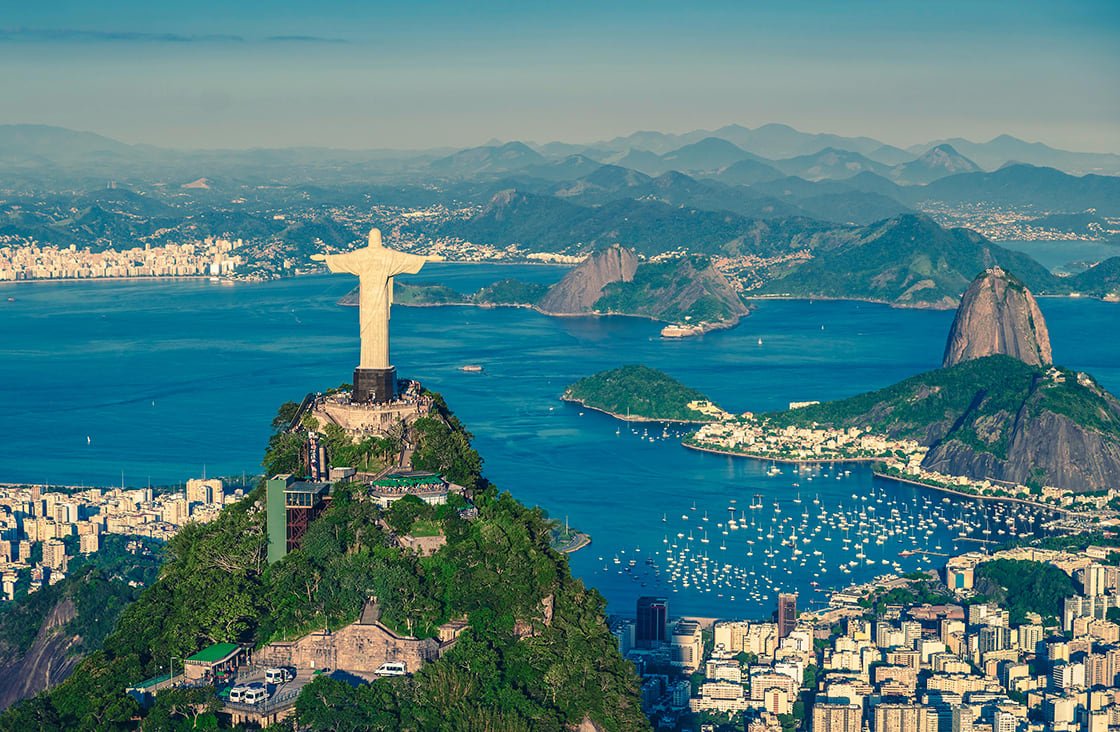
So, you want to vacation in South America, and you’ve done the hard bit – deciding which of the countless incredible destinations to explore. But with such a complex array of dry seasons, rainy seasons, altitudes, and tourist peak seasons in South America, where on Earth do you start when it comes to planning the when?!
In this post, you’ll find out the pros and cons of visiting this glorious continent at different times of the year, and you’ll be fully equipped for booking that adventure.
A General Rulebook
If you’ve got this far already, you won’t need reminding that South America is a vast continent, comprising 12 different countries, and spanning nearly 7 million square miles in area. It’s a place of endless discovery, but the swampy mangroves, snow-capped mountains, bone-dry deserts, misty forest valleys, volcanic islands, and dynamic cities of South America all come with their own unique set of weather systems and other travel factors.
The truth is, there is so much variation and range that it’s next to impossible to say what are the ‘best’ months to visit South America – it is a year-round destination and you’re sure to have the time of your life whenever you choose to go. However, there are a few general rules that are useful to bear in mind when planning your trip.
-
- The seasons are reversed in the Southern Hemisphere.
- The further south you go, the more clearly the seasons are defined.
- The closer you are to the equator (for example, Peru and Ecuador), the warmer the climate is consistent. The higher you climb in altitude, the colder it gets.
- The cheapest times to travel to South America are the shoulder seasons of Spring and Autumn. During the western holiday periods of July, August, and December, prices are higher and attractions are busier.
- The northern parts tend to be more favorable during the winter months when the temperatures are milder and there is less rainfall. The southernmost parts of the continent (such as Patagonia) are best explored during the summer months when they are less icy and inhospitable.
Read on for a breakdown of just what happens, and where, in a South American year.
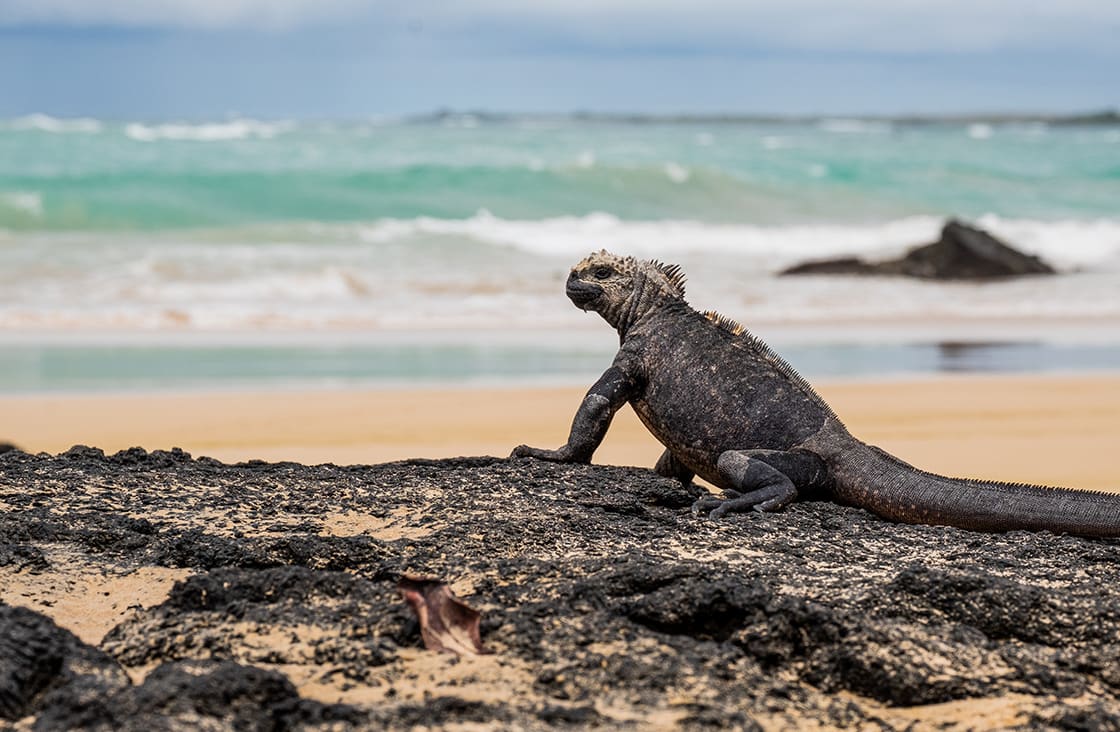
Iguana At The Beach
Spring (September – November)
Widely considered the best time of the year to visit South America due to its balance of comfortable temperatures and dry weather, spring hails the arrival of stunning wildflowers and newborn animals and the departure of the winter tourists.
It’s the dry season for Bolivia’s iconic salt flats (Salar de Uyuni) which means that although you’re unlikely to see the stunning mirror of water that occurs in the wet months, the climate is perfect for exploring.
Likewise, for the Amazon Rainforest, dry season (June to November) means that river levels are low, exposing more hiking trails, and making fishing much more successful – and there are fewer mosquitos about. Being off-peak, the trails and lodges are also less crowded. However, visiting the Amazon in flood season has its own set of benefits – more on this later.
It’s also an ideal time for sightseeing in cities – as a shoulder season, the crowds won’t be overwhelming in urban hubs like Buenos Aires and Rio de Janeiro, and the temperatures will be more manageable.
Although a Galapagos Cruise is a year-round activity, spring is an active time for the islands’ wildlife, rainfall is low, and the skies and seas are calm – ideal sailing conditions.
Unmissable festivities in Ecuador take place on November 2nd – Día de Los Difuntos (Day of the Dead) with feasts, flowers, and fine clothing, and on October 9th, with the city of Guayaquil’s Independence celebrations.

Nahuel Huapi Lake near Bariloche, Argentina
Summer (December – February)
For most of the continent, these months are the hottest of the year and the wettest. December is a high tourist season so prices will be higher, and sites of interest will be more crowded. A weather phenomenon known as El Niño sweeps across South America sporadically, every two to seven years, causing upheaval in many of the normal weather systems at this time of year.
Summer is the time for street parties and beaches – and South America has a lion’s share of festivals and sensational coasts. But be aware – they will be busy! Copacabana beach in Rio de Janeiro gets crowded during the world-famous Rio Carnival that takes place in February.
The rainy season sets in throughout much of the continent, except Patagonia in the south which, together with its milder temperatures, makes visiting Patagonia an ideal summer destination for wildlife watching and hiking.
Bear in mind that the Inca Trail leading to many ancient Andean citadels is closed for maintenance work during the month of February. The Pantanal and the Amazon also bear the brunt of the soggy weather so explorable areas can be limited in the summer, and Buenos Aires in Argentina can be unbearably hot.
The Ecuadorian coast is at the mercy of the rainy season, but summer rains give way to crystal clear blue skies and high temperatures, which are replaced in the dry season by overcast clouds.
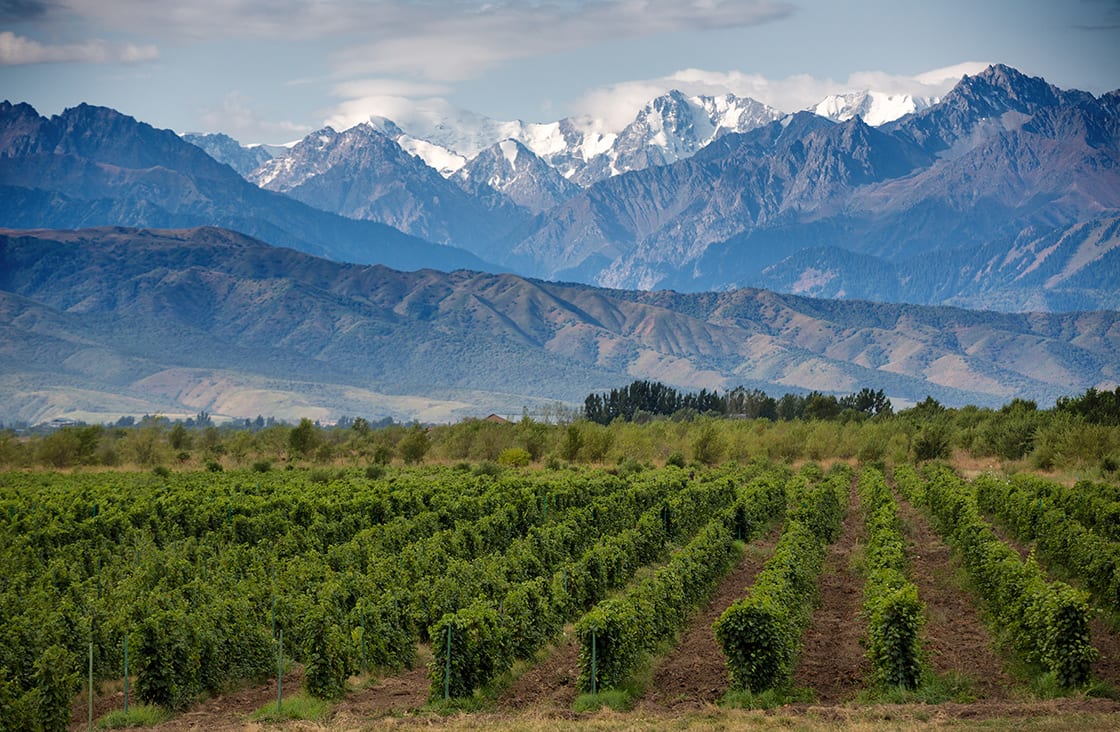
Vineyards in Mendoza, Argentina
Autumn (March – May)
Another shoulder season, autumn shares many of spring’s benefits and is a great time to travel to South America because of the lower tourist numbers and milder temperatures. The summer rains leave landscapes lush and green, the city temperatures are bearable again, and the prices are much lower.
The Argentinian wine region of Mendoza is busy with winemaking activity – a great time to get involved in a wine tasting tour. The undulating hills are hydrated and the heat is more subdued in these parts.
Despite being at the tail end of the rainy season, autumn is an excellent time for an Amazon River Cruise because of the high river levels opening up creeks and waterways that aren’t accessible at other times of the year. The increased rainfall draws out animals and marks the beginning of their mating season, as well as saturating the colors of the rainforest.
The sea is at its warmest in the autumn months and provides perfect conditions for snorkeling at the coast. It’s a good time to visit the Galapagos Islands, making the most of calmer seas and skies, and a plethora of wildlife to see. The Uyuni salt flats are transformed into a spectacular reflective surface in the autumn making for jaw-dropping photos.
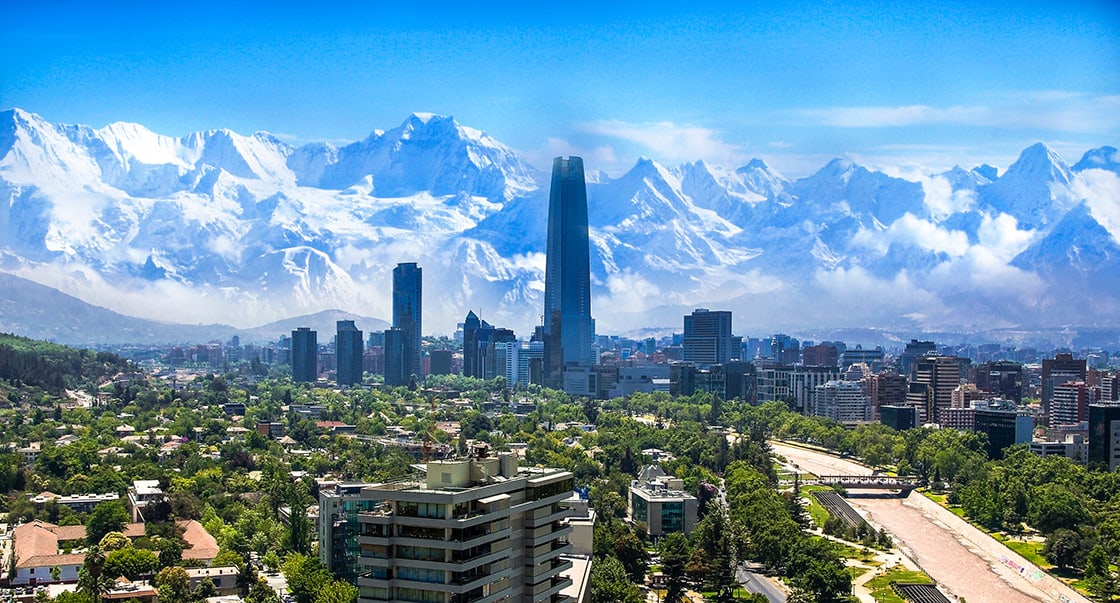
Urban View of White Santiago, Chile
Winter (June – August)
Winter in South America marks the end of the wet season – be ready for clearer skies and cooler temperatures. This is probably the busiest tourist time, but for good reason – the clear conditions are perfect for visiting sites like Machu Picchu and hiking in general (make sure to book Inca Trail tickets six months in advance), and Brazil’s epic wetland the Pantanal brims with wildlife at this time of year. Explore the Atacama Desert in the winter and be rewarded by astonishingly clear starry skies at night.
Patagonia in southern Chile and Argentina is mostly shut down in the winter by harsh ice and snow, but some areas are open for skiing and other snowsports. It’s also worth bearing in mind that during the dry season a dense fog called La Garua descends on Peru’s capital of Lima, whereas nearby Cusco benefits from blue skies and minimal rain.
Buenos Aires hosts the Tango’s International Festival and Dance World Cup in August each year which is worth a trip, while the end of July transforms a small Bolivian town called San Ignacio de Moxos into a wild summer party of costumes and color.
When it comes down to it, much depends on the activities you’re planning and where you’d like to visit. Many places in South America make good all year round destinations, such as the Galapagos Islands which have a constant succession of nesting, breeding, migrating, and hatching seasons, but some places need a bit more careful planning. Some sites can come to life in mystical rainy weather, while others are obscured, and in some parts of the continent such as Torres del Paine in Patagonia, the weather can whistle through several seasons in just one day! It’s always wise to know what’s coming, so do your homework, then get packing!
Disclaimer
While Rainforest Cruises aim to provide accurate and up-to-date information, we make no representations as to the accuracy or completeness of any information herein or found by following any link on this site. Rainforest Cruises cannot and will not accept responsibility for any omissions or inaccuracies, or for any consequences arising therefrom, including any losses, injuries, or damages resulting from the display or use of this information.
You may also like
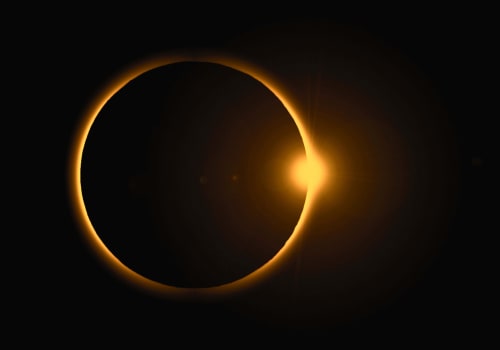
Total Solar Eclipse Cruise 2023
What will you be doing on April 20, 2023? Imagine being on a tropical island paradise in the remote southern reaches of Indonesia’s Banda Sea and witnessing one of the most profound […]
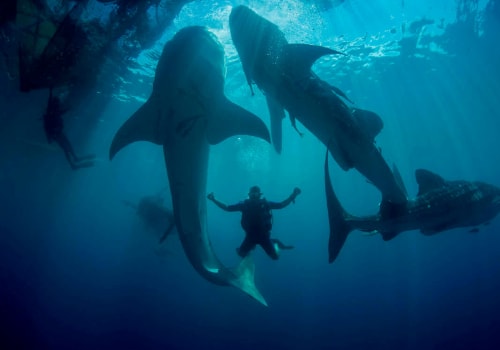
Raja Ampat Diving: Best Dive Sites, Season, Resorts & Liveaboards
Straddling the Equator off the extreme north-western tip of Indonesia’s Papua province, Raja Ampat is an archipelago of 610 islands; a figure that can be boosted to more than 1500 if you […]
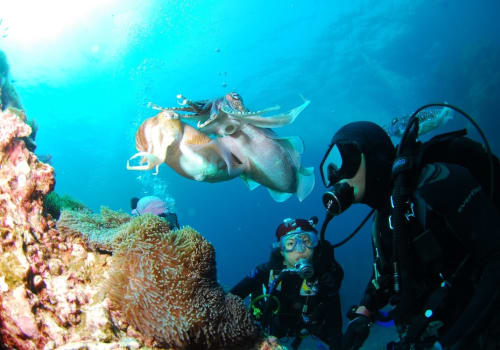
Diving Komodo vs Raja Ampat: Which is Better?
If you had to choose between diving Komodo and diving Raja Ampat, which would you choose? Which is best? Both are stellar locations; Komodo is unique due to the top side dragons, […]
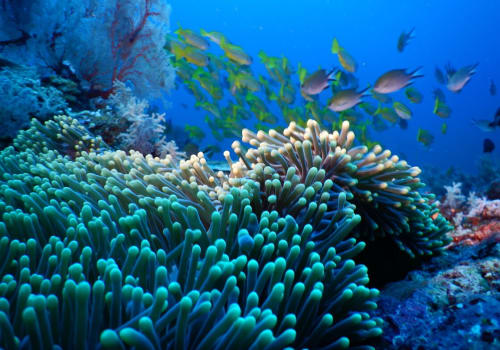
9 Best Diving Spots in Southeast Asia
With the Indo-Pacific Coral Triangle at its heart, Southeast Asia offers some of the most spectacular scuba diving in the world. As a consequence of the immense tidal changes from the North […]
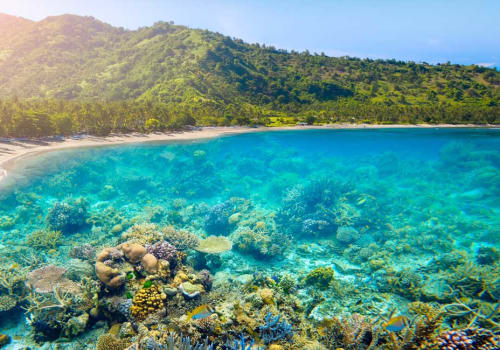
Diving Indonesia: Best Dive Sites, Season & Liveaboard Routes
With 17,508 islands, 50,000 miles of coastline, 98,000 square nautical miles of territorial sea, 20,000 square kilometers of coral reefs and some 600 species of coral, 30,000 square kilometers of mangroves forest, […]

19 Best Honeymoon Destinations & Resorts In India
Whether you are looking for a romantic beach break, or a more active adventure, India is the honeymoon destination that truly has it all. There’s no better place to fall in love […]
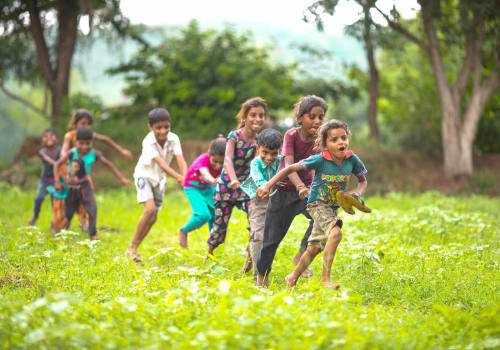
Best Family Trip Destinations & Things To Do With Kids In India
India might not be the most obvious family cruise holiday choice, but for those intrepid families who yearn for something different, India may be one of the most captivating countries you encounter, […]
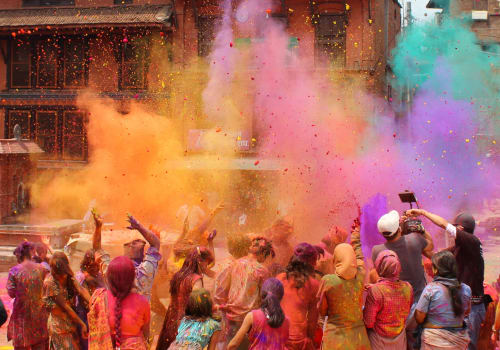
Indian Festivals: Color, Lights, Painted Elephants & Poo?
India is a land of festivals, and it is said that over a thousand take place every year – some celebrated religion-wide, some at a state level, others just within a local […]

India Food: 25 Most Popular Traditional Dishes To Eat In India
Traditional Indian food is renowned worldwide for its wonderful use of herbs and spices, and its diverse range of deep-fried snacks, pastries, curries, gravies, sauces, rice dishes, tandoor-cooked meats, vegetable dishes, chutneys, […]
On the Lookout for Expert Advice & Offers?
Join over 20,000 discerning travelers and be the first to receive our monthly exclusive discounts, inspiring travel content and expert tips, straight to your inbox.
Source https://www.southamerica.travel/south-america/travel-info/best-time-to-visit
Source https://internationalliving.com/south-america-travel-itinerary-trl/
Source https://www.rainforestcruises.com/guides/best-time-to-visit-south-america